
The National Labor Relations Act of 1935 is a foundational statute of United States labor law that guarantees the right of private sector employees to organize into trade unions, engage in collective bargaining, and take collective action such as strikes. Central to the act was a ban on company unions. The act was written by Senator Robert F. Wagner, passed by the 74th United States Congress, and signed into law by President Franklin D. Roosevelt.

The National Labor Relations Board (NLRB) is an independent agency of the federal government of the United States with responsibilities for enforcing U.S. labor law in relation to collective bargaining and unfair labor practices. Under the National Labor Relations Act of 1935 it supervises elections for labor union representation and can investigate and remedy unfair labor practices. Unfair labor practices may involve union-related situations or instances of protected concerted activity. The NLRB is governed by a five-person board and a General Counsel, all of whom are appointed by the President with the consent of the Senate. Board members are appointed to five-year terms and the General Counsel is appointed to a four-year term. The General Counsel acts as a prosecutor and the Board acts as an appellate quasi-judicial body from decisions of administrative law judges.
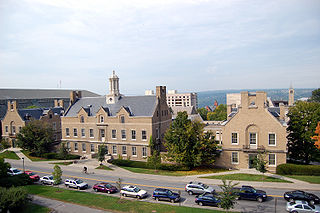
The New York State School of Industrial and Labor Relations at Cornell University (ILR) is an industrial relations school and one of the four New York State contract colleges at Cornell University, located in Ithaca, New York, United States. The School has six academic departments which include: Economics, Human Resource Management, International and Comparative Labor, Labor Relations, Organizational Behavior, and Social Statistics.
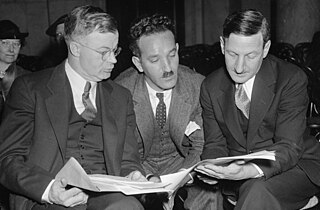
Nathan Witt, born Nathan Wittowsky, was an American lawyer who is best known as being the Secretary of the National Labor Relations Board (NLRB) from 1937 to 1940. He resigned from the NLRB after his communist political beliefs were exposed and he was accused of manipulating the Board's policies to favor his own political leanings. He was also investigated several times in the late 1940s and 1950s for being a spy for the Soviet Union in the 1930s. No evidence of espionage was ever found.
Kate Bronfenbrenner is the Director of Labor Education Research at the Cornell University School of Industrial and Labor Relations. She is a leading authority on successful strategies in labor union organizing, and on the effects of outsourcing and offshoring on workers and worker rights.
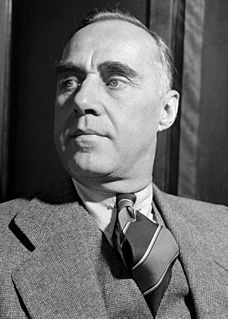
John Mills Houston was a member of the United States House of Representatives from the 5th congressional district of Kansas from 1935 to 1943. He was also a member of the National Labor Relations Board from 1943 to 1953, originally appointed by Franklin Roosevelt.
NLRB v. Mackay Radio & Telegraph Co., 304 U.S. 333 (1938), is a US labor law case of the US Supreme Court which held that workers who strike remain employees for the purposes of the National Labor Relations Act (NLRA). The Court granted the relief sought by the National Labor Relations Board, which sought to have the workers reinstated by the employer. However, the decision is much better known today for its obiter dicta in which the Court said that an employer may hire strikebreakers and is not bound to discharge any of them if or when the strike ends.
Paul M. Herzog was an American lawyer, educator, civil servant, and university administrator. He was chairman of the United States National Labor Relations Board from 1945 to 1953.
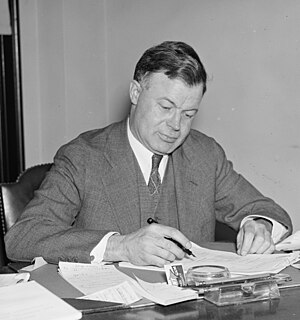
Joseph Warren Madden was an American lawyer, judge, civil servant, and educator. He served as a Judge of the United States Court of Claims and was the first Chairman of the National Labor Relations Board. He received the Medal of Freedom in 1947.

Wilma B. Liebman is an American lawyer and civil servant who is best known for serving as a Member of the National Labor Relations Board (NLRB). She was designated Chair of the Board by President Barack Obama on January 20, 2009, becoming only the second woman to lead the NLRB.
David Joseph Saposs was an 20th-century American economist, labor historian, and civil servant, best known as chief economist of the National Labor Relations Board (1935-1940).
Ford Motor Co. v. NLRB, 305 U.S. 364 (1939), is an 8-to-0 decision by the Supreme Court of the United States which held that an administrative agency of the United States government, seeking enforcement of its orders, cannot withdraw its petition or the transcript of the administrative hearing once these have been submitted to the appropriate court. Whether the agency should be permitted to withdraw its petition is a decision for the court of appeals, the Supreme Court said.
National Labor Relations Board v. Fansteel Metallurgical Corporation, 306 U.S. 240 (1939), is a United States Supreme Court case on labor laws in which the Court held that the National Labor Relations Board had no authority to order an employer to reinstate workers fired after a sit-down strike, even if the employer's illegal actions triggered that strike.
In re Labor Board, 304 U.S. 486 (1938), is a 5-to-2 decision by the Supreme Court of the United States which held that the National Labor Relations Act requires the filing of a petition and a transcript in order for an enforcement order to proceed in federal court, and that a writ of prohibition and writ of mandamus are appropriate measures to take in quashing a petition when no transcript has been filed.
NLRB v. Columbian Enameling & Stamping Co., 306 U.S. 292 (1939), is a US labor law case where the US Supreme Court held 5-to-2 that the National Labor Relations Act required decisions of the National Labor Relations Board (Board) to be based on substantial evidence. The Supreme Court overturned a ruling of the Board for not being based on substantial evidence. The Court also held that only the representative of the workers could issue collective bargaining proposals under the law, and that proposals transmitted by a third party did not trigger the Act's protections or duties.
National Labor Relations Board v. Sands Manufacturing Co., 306 U.S. 332 (1939), is US labor law case, decided by a majority of 5 to 2 by the US Supreme Court, which overturned a decision by the National Labor Relations Board because it was not supported by substantial evidence. The Court defined collective bargaining under the National Labor Relations Act to mean that proposals and responses to proposals were pending, and that future meetings were being planned. Absent such conditions, bargaining was not occurring. The Court also held that an employer did not violate the Act if it chose to deal with the employees on an individual basis.
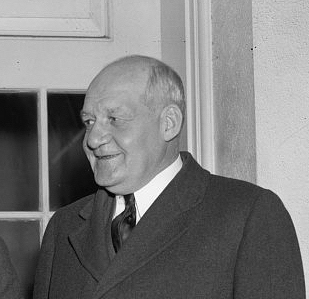
Harry Alvin Millis was an American civil servant, economist, and educator and who was prominent in the first four decades of the 20th century. He was a prominent educator, and his writings on labor relations were described at his death by several prominent economists as "landmarks". Millis is best known for serving on the "first" National Labor Relations Board, an executive-branch agency which had no statutory authority. He was also the second chairman of the "second" National Labor Relations Board, where he initiated a number of procedural improvements and helped stabilize the Board's enforcement of American labor law.

John Cushman Truesdale Jr. was an American lawyer and civil servant who served two terms as Executive Secretary of the National Labor Relations Board, four terms as a Board member, and one term as Board Chair.
Guy Otto Farmer was an American lawyer and civil servant. He was Chairman of the United States National Labor Relations Board from July 1953 to August 1955. After leaving government service, he represented the Bituminous Coal Operators Association, the collective bargaining arm of the bituminous coal mining industry in the United States.
Jean Trepp McKelvey was an American economist specialising in arbitration and industrial relations. McKelvey was an esteemed tenure professor at Sarah Lawrence College (1932–1945) and Cornell University (1946–1976) where at the latter she was a founding faculty member for the School of Industrial and Labor Relations, developing the curriculum and teaching five courses including arbitration, labor law and labor practices. Coined the "mother of arbitration", in 1947 McKelvey was the first woman admitted to the National Academy of Arbitrators, in 1970 became its first woman president and established an arbitration training program for women and minorities. In addition to her successful published research career, McKelvey served on the New York State Board of Mediation (1955–1966) and Federal Services Impasses Panel (1979–1990) and received numerous accolades including the Federal Mediation and Conciliation Service's Special Award for Distinguished Service in Labor Management Relations (1973) and Arbitrator of the Year Award from the American Arbitration Association (1983).